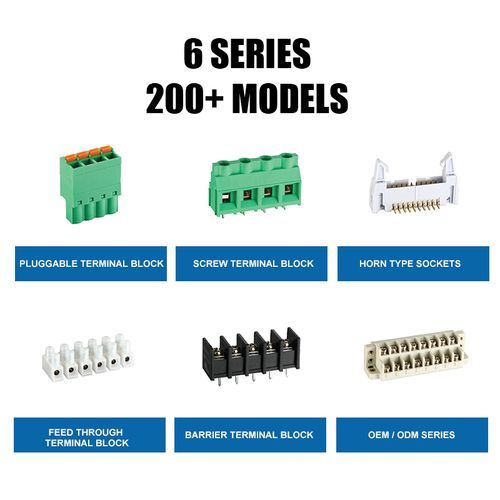Unlock your product's potential with our One-stop solutions!
+86-755-83222882

GET QUOTE
Mastering Plastic Enclosure Design: Essential Guidelines and Advancements in Plastic Enclosure Technology
Designing plastic enclosures is a crucial aspect of product development, particularly in industries like electronics, telecommunications, and consumer goods. These enclosures protect sensitive components, enhance product aesthetics, and contribute to overall functionality. In this blog, we will explore the key principles of plastic enclosure design guidelines and the latest innovations in plastic enclosure technology. We'll also delve into related topics, including long-tail keywords and frequently asked questions to provide a comprehensive understanding of the subject.
Understanding the Basics of Plastic Enclosure Design
Plastic enclosures serve as the protective casing for various electronic and mechanical devices. These enclosures must be designed with precision to ensure that they meet the specific needs of the product. The primary considerations in plastic enclosure design guidelines include material selection, wall thickness, draft angles, and assembly methods.
Material Selection in Plastic Enclosure Design
Selecting the right material is the foundation of any plastic enclosure design. Commonly used materials include ABS (Acrylonitrile Butadiene Styrene), polycarbonate, and polypropylene. Each material has its strengths and weaknesses, so the choice depends on factors like durability, impact resistance, and thermal stability. For example, ABS is known for its toughness and ease of fabrication, making it ideal for a wide range of applications. Polycarbonate, on the other hand, offers excellent optical clarity and is often used in products requiring transparency.
Wall Thickness and Structural Integrity
The wall thickness of a plastic enclosure significantly impacts its strength and durability. A well-designed enclosure will have uniform wall thickness to avoid weak points that could lead to cracking or warping. However, the wall thickness should also be optimized to minimize material costs and reduce the overall weight of the product. Plastic enclosure technology has advanced to the point where designers can use sophisticated software tools to simulate and optimize wall thickness, ensuring a balance between strength and cost-effectiveness.
Draft Angles and Moldability
Draft angles are essential in plastic enclosure design because they facilitate the removal of the part from the mold during manufacturing. Without proper draft angles, the enclosure could become stuck in the mold, leading to defects or increased production costs. The general guideline is to incorporate a draft angle of at least 1 to 2 degrees per side, although this can vary depending on the material and complexity of the design. Modern plastic enclosure technology allows for more precise control over draft angles, resulting in higher quality products with fewer defects.
Assembly Methods and Fastening Techniques
The assembly of plastic enclosures often involves joining multiple parts together. The choice of fastening method depends on factors such as the enclosure’s size, material, and intended use. Common assembly methods include snap fits, screws, and ultrasonic welding. Snap fits are popular for their ease of use and cost-effectiveness, while screws offer a more secure and permanent solution. Ultrasonic welding, an advanced plastic enclosure technology, uses high-frequency vibrations to bond parts together, creating a strong and hermetic seal.
Advancements in Plastic Enclosure Technology
The field of plastic enclosure technology is constantly evolving, with new materials and manufacturing techniques emerging to meet the demands of modern products. Understanding these advancements can help designers create more efficient and cost-effective enclosures.
Additive Manufacturing and Rapid Prototyping
Additive manufacturing, also known as 3D printing, has revolutionized the way plastic enclosures are designed and produced. This technology allows for rapid prototyping, enabling designers to create and test multiple iterations of a design in a short period. With 3D printing, complex geometries that would be difficult or impossible to achieve with traditional molding techniques can be easily fabricated. This flexibility opens up new possibilities in plastic enclosure design, allowing for greater innovation and customization.
Advanced Materials for Enhanced Performance
In recent years, there has been significant progress in the development of advanced materials for plastic enclosures. High-performance plastics, such as PEEK (Polyether Ether Ketone) and PPS (Polyphenylene Sulfide), offer exceptional mechanical and thermal properties, making them suitable for demanding applications. These materials can withstand extreme temperatures, chemical exposure, and high levels of stress, making them ideal for use in harsh environments. Additionally, the use of bioplastics and recycled materials is gaining traction as manufacturers seek to reduce their environmental impact.
Integration of Electronics and Smart Features
The rise of smart devices has led to the integration of electronic components directly into plastic enclosures. This trend is driven by the need for compact and efficient designs that can house both the mechanical and electronic elements of a product. Advanced plastic enclosure technology now includes techniques for embedding sensors, antennas, and other electronic components within the enclosure itself. This integration not only saves space but also improves the overall performance and functionality of the device.
Common Challenges in Plastic Enclosure Design and How to Overcome Them
While plastic enclosure design offers numerous benefits, it also presents several challenges. Understanding these challenges and how to address them is crucial for successful product development.
Managing Thermal Dissipation
One of the primary concerns in plastic enclosure design is managing heat generated by electronic components. Unlike metal, plastic is not an efficient conductor of heat, which can lead to overheating and potential failure of the device. To overcome this challenge, designers can incorporate heat sinks, vents, or thermal pads into the enclosure design. Additionally, selecting a material with higher thermal conductivity or using a plastic enclosure technology that enhances heat dissipation can be effective solutions.
Ensuring EMC Compliance
Electromagnetic compatibility (EMC) is another critical consideration in the design of plastic enclosures, especially for electronic devices. EMC refers to the enclosure’s ability to prevent electromagnetic interference (EMI) from affecting the performance of the device or other nearby electronics. To achieve EMC compliance, designers can use conductive coatings, gaskets, or shielding materials within the enclosure. These solutions help to block or dissipate electromagnetic waves, ensuring the device operates reliably without interference.
Balancing Aesthetics and Functionality
While functionality is the primary focus of plastic enclosure design, aesthetics also play a significant role in product appeal. Designers must strike a balance between creating an enclosure that looks attractive and one that meets all functional requirements. This can be particularly challenging when working with complex shapes or integrating multiple components. Plastic enclosure technology has advanced to the point where designers can use computer-aided design (CAD) software to visualize and refine the appearance of the enclosure, ensuring it meets both aesthetic and functional criteria.
Conclusion: The Future of Plastic Enclosure Design
As technology continues to evolve, the field of plastic enclosure design is poised for even greater advancements. From the development of new materials to innovative manufacturing techniques, the possibilities for creating more efficient, durable, and aesthetically pleasing enclosures are expanding. By following plastic enclosure design guidelines and leveraging the latest plastic enclosure technology, designers can ensure their products not only meet functional requirements but also stand out in the market.
For businesses and designers seeking a reliable partner in plastic enclosure manufacturing, SZOMK offers unparalleled expertise and cutting-edge solutions. With a deep understanding of industry trends and a commitment to quality, SZOMK provides a wide range of customizable plastic enclosures tailored to meet your specific needs. By choosing SZOMK, you benefit from advanced design capabilities, superior materials, and a dedication to innovation that ensures your products are built to last.Partner with SZOMK today and take your plastic enclosure design to the next level.


